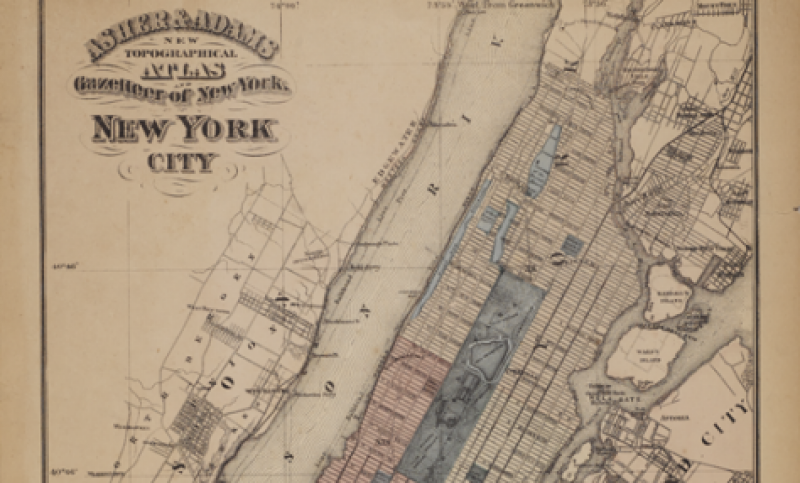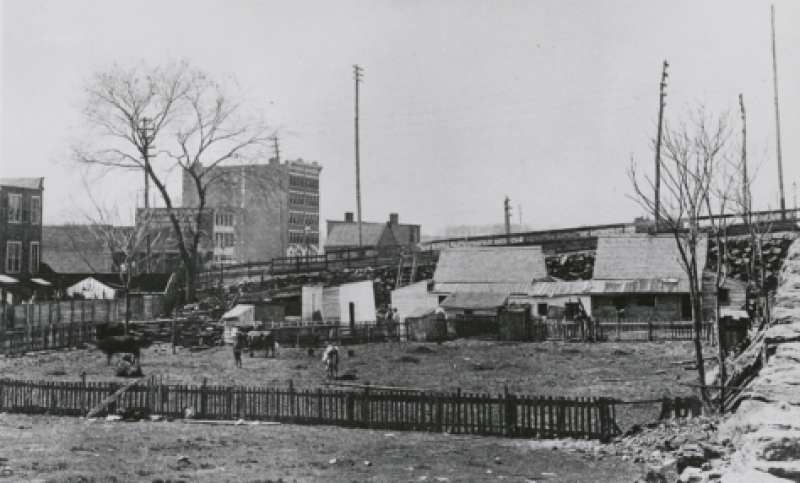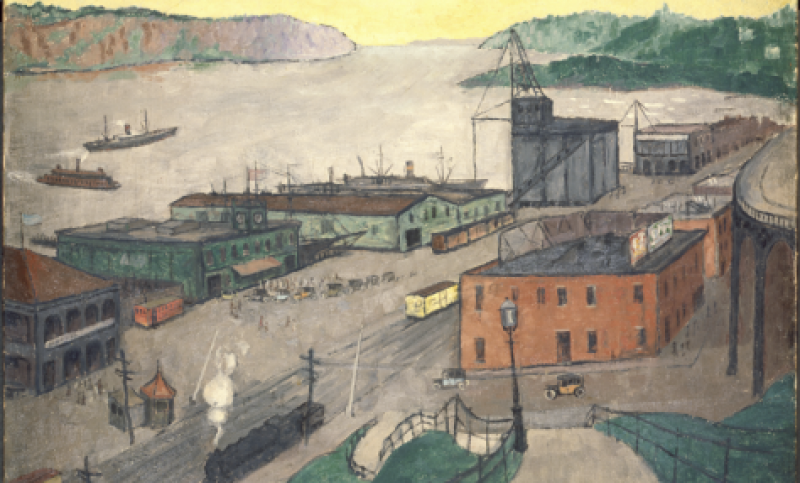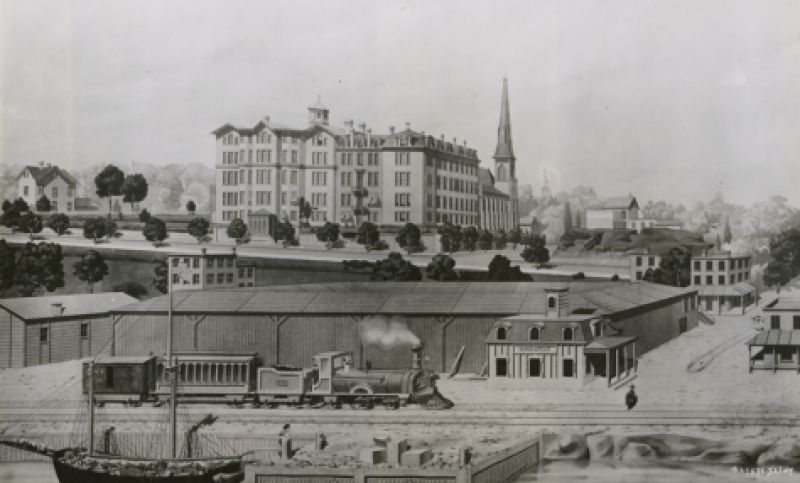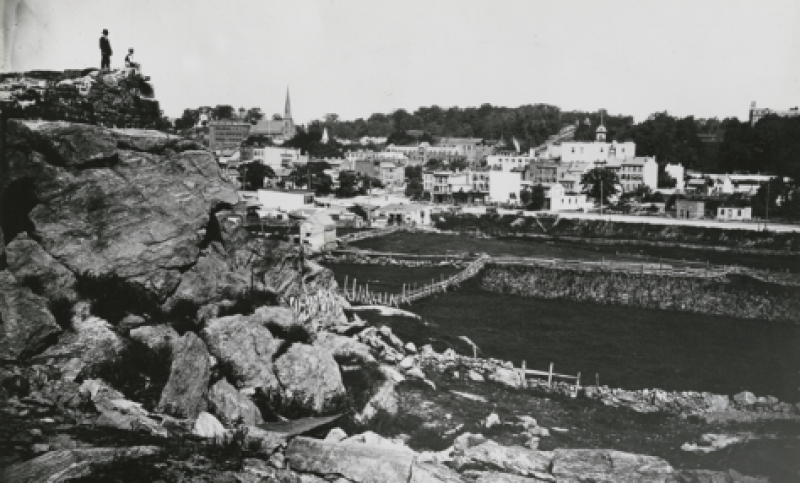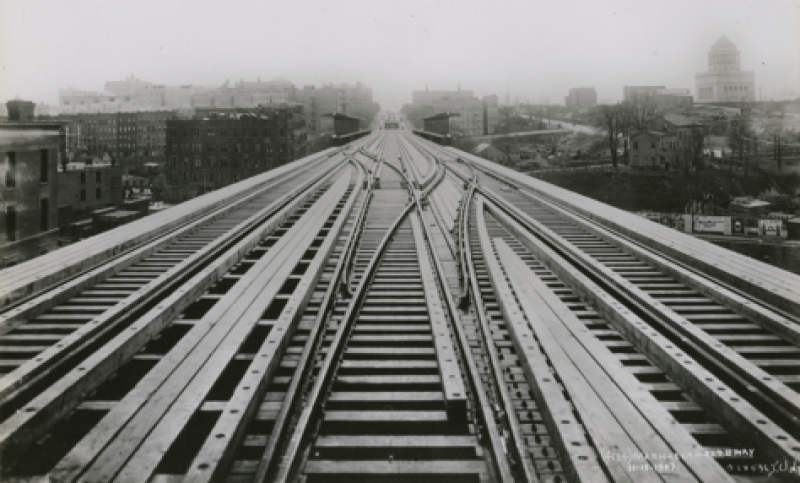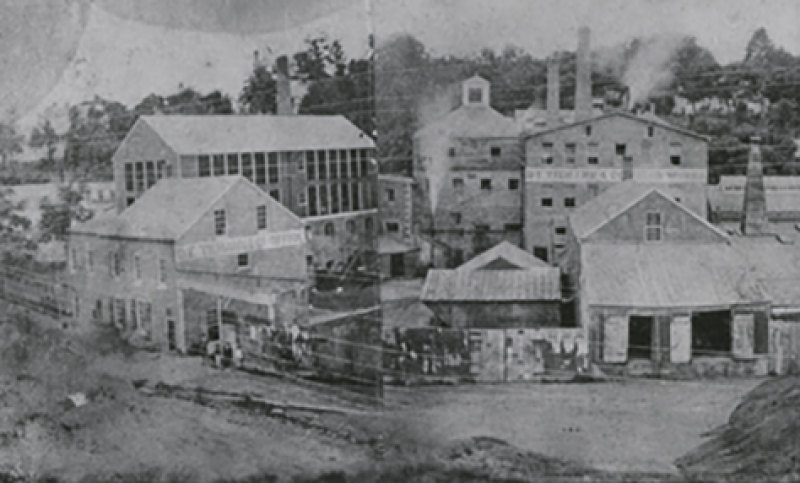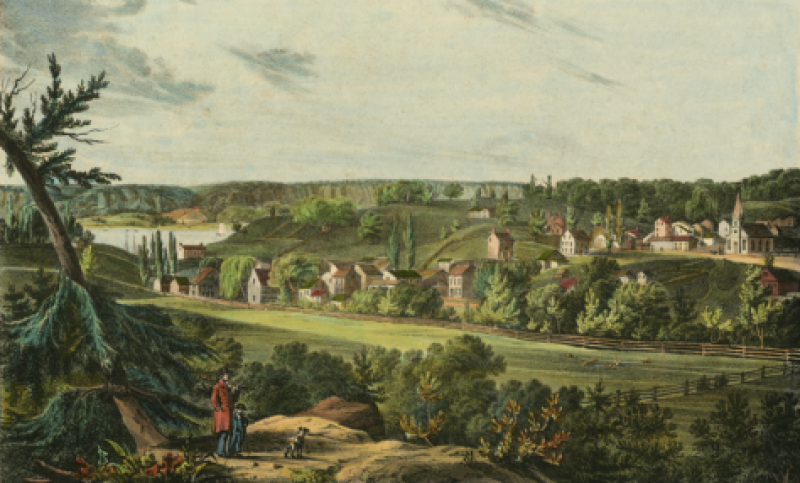
Becoming a City
The area of Manhattan Island that would become Manhattanville has always been a nexus – a meeting place for ideas, people, and products. The valley that today centers around 125th Street once formed a natural east-west corridor for Lenape Indians. Low-lying streams ran into the river, creating a valuable fishing place. When Henry Hudson, the first recorded European explorer, arrived in September 1609, he paused here to purchase oysters from local native canoes. Later, Dutch farming families moved into the area then known as the “Hollow Way.”
The history of Manhattanville – and the nation – would change dramatically due to the events of September 16, 1776. On that day, American and British forces waged the Battle of Harlem Heights. After hours of fighting, George Washington had won his first major victory of the American Revolution. Though the enemy soon captured the city, the Continental Army had gained needed experience that would lead eventually to victory.
The town of Manhattanville was founded in 1806 as the western gateway to Harlem, already a well-established community to the east. Centered on the intersection of Bloomingdale Road and Manhattan Street (now Broadway and 125th), it occupied a crucial point on the island. While the teeming lower wards grew into a world city, upper Manhattan remained mostly rural and sparsely populated. Wealthy New Yorkers built elegant country houses overlooking the Hudson River, to which they retired in the summers to escape annual downtown outbreaks of cholera and smallpox. Less affluent residents also made their home in the area, laboring on small farms or in polluting industries, such as leather tanning or glue-making, that were banned from the metropolis. Within a few decades the town had “grown to respectable dimensions,” earning the populace a reputation for hard work and honesty.
The first container of milk arrived by train to the New York City market in 1841. Instantly, Manhattanville had a new spur to growth. Its location made it a crucial connection point between city and country. Busy ferry piers and a railroad terminal brought farm goods from upstate New York and rural New Jersey into neighborhood facilities for processing, packaging, and distribution.
While new technologies and networks allowed these developments, they also spelled the end of older folkways. Cows had been present on Manhattan island since the first European settlers, but the ever-expanding city had pushed agricultural industries further from crowded residential neighborhoods. By the late-19th century, the vast majority of the milk, butter, and cheese consumed by New Yorkers was imported by railroad car, sometimes from hundreds of miles away. A local dairy, still operating in the 1890s, was a late holdout but within a few years, the last working dairy in Manhattan would be gone.
Streetcars and railroads had provided some access to the area in the late nineteenth century, but it was the opening of the subway in 1904 that finally connected Manhattanville to the full economic life of the city. Within a year, a building boom was under way. Thousands of new residents moved into the neighborhood; innovative industries appeared. Laborers from across the boroughs could now commute to work in upper Manhattan. “Manhattanville long ago ceased to be regarded as a summer resort,” concluded the New York Times in 1912. “It is rapidly developing into a busy and important industrial district of the upper part of the city.” Never before or since has the area experienced such head-spinning changes.
